Exactly
half a century ago or in October 1962, Indian army suffered a most
humiliating defeat at the hands of Peoples Liberation Army or PLA of
China In Ladakh and Arunachal Pradesh. For ordinary citizens of
India, smug and complacent in the belief that India's borders were
well protected, it was a very severe shock and a dawn of new
realization that in the terms of the Realpolitik of the world, the
power of the gun matters most. Unless the country has that power all
talk of peace and non alignment were just bubbles in the air.
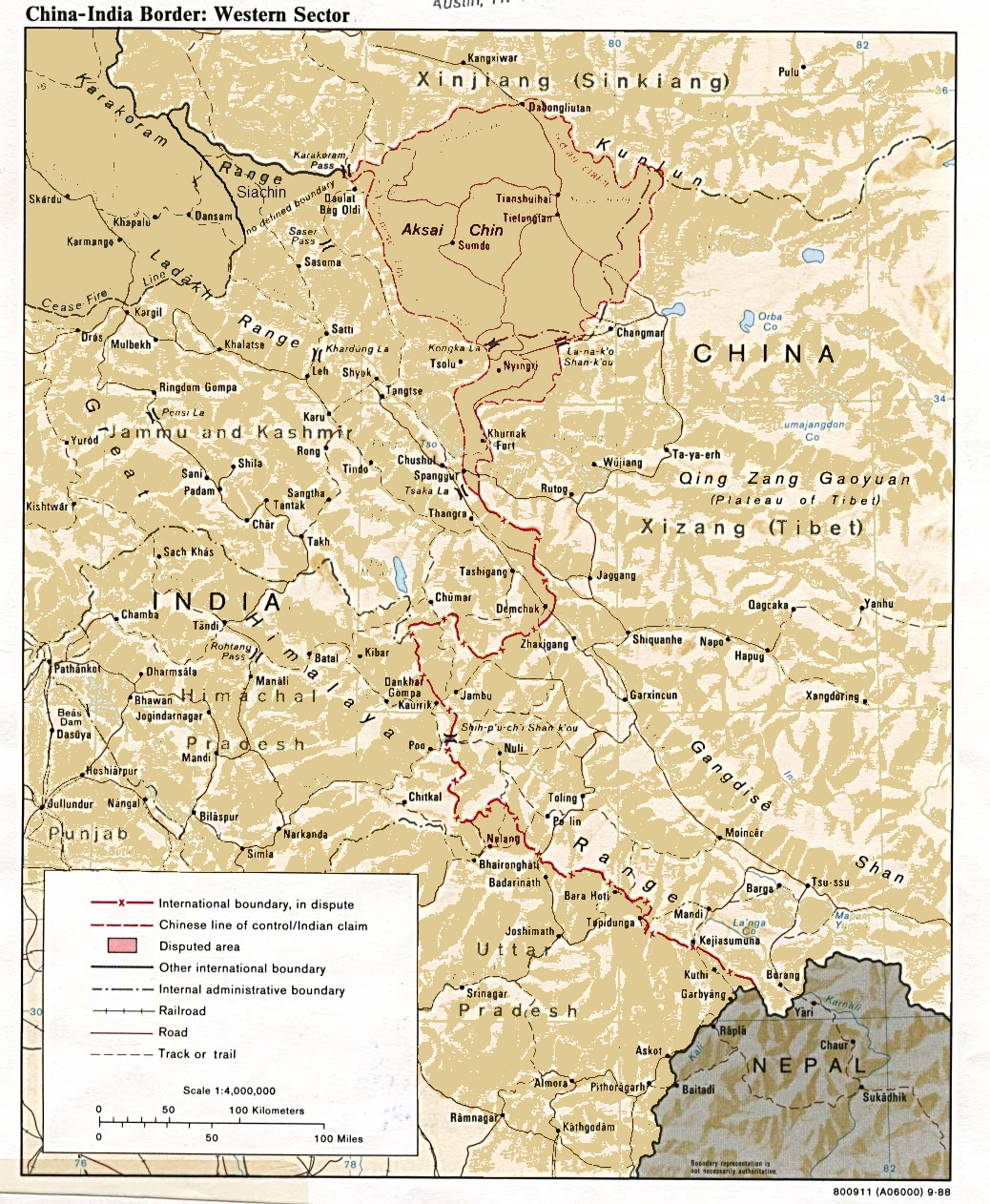

In
this series of articles, I want to share with the readers, the
blunders committed by India's inexperienced leadership of those years
in formulating India's China policy and how they were tricked and
fooled by Mao's China. When I remember the agony of those days, a
shiver still passes down my spine even today. Let me begin with the
political situation, which India inherited from the British.
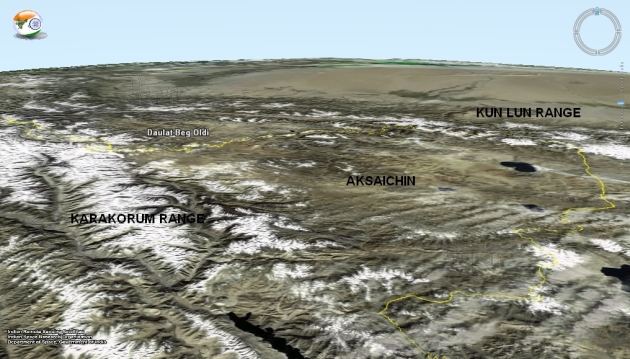

A
tripartite meeting of the British administration in India and
representatives of Tibet and China was held in 1913 at Shimla in
India. A draft treaty was agreed upon during this meeting. This
agreement is known as Shimla treaty. According to the terms of this
treaty, the relationships and borders between these three countries,
namely India, Tibet and China, were fixed and agreed upon. However,
even though the Chinese representative attending the meeting, Mr.
Ivan Chen had initialed the draft treaty, he refused to put his
country's official seal on the paper. Subsequently, the Government in
Beijing declared that this treaty was unacceptable to China.
According to representatives of India and Tibet, since the treaty was
mainly about the relationships and the borders between two sovereign
countries, India and Tibet, they believed that the Chinese
representative had merely attended the meeting as an observer and his
approval or disapproval had no bearing on the proceedings of the
treaty. Eventually another meeting was held in July 1914 between
representatives of India and Tibet and the draft treaty was finally
approved, initialed and sealed.

In
this accord, it was agreed that a region spread over 14380 square
miles and known as Aksaichin: located east of Ladakh, between
Karakoram mountain range and Kun Lun mountain ranges, would be part
of British India. The region of Ladakh in those days, was part of the
princely state of Jammu and Kashmir. In fact, old references show
that the state administration used to have a small police outpost at
Shahidulla( Located on present Tibet- Xinjiang road) in this region.
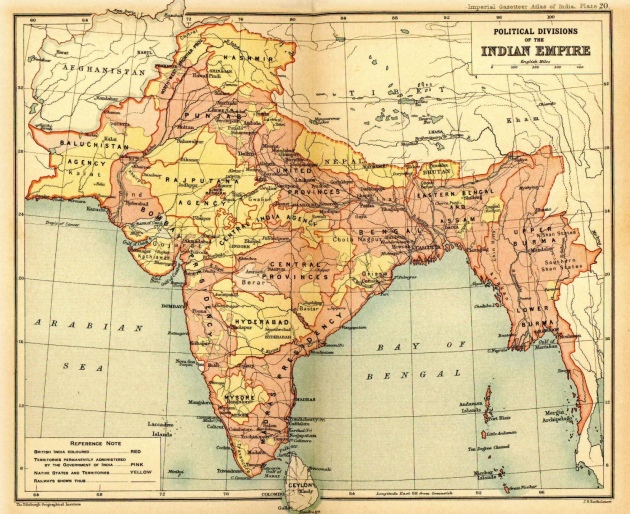

1908
map of India
After
India became independent, the responsibility of defending this region
was given to CRPF or Central reserve police force. Since the region
became quite inaccessible during winter months, patrols were run by
the CRPF during summer time to Aksaichin.

Access
routes to Aksaichin from Ladakh
There
were only two possible routes by which these police could reach
Aksaichin. The first route was through famous Karakoram pass and
reached up to Shahidulla. The second route was more important and
went through Marsemik pass near Pangong lake to Kongka pass and then
to Kanak pass on Aksaichin-Tibet border.

CRPF Border posts prior to 1959
Before
we proceed further, it is important to note why such an inhospitable
and remote region was and is so important for China as well as India.
For India, it was country's only gateway to central Asia after the
partition in 1947. For China, the remote western provinces of Tibet
and Xinjiang were effectively separated by Indian possession of
Aksaichin and prevented it from movement of armed forces from Tibet
to Xinjiang and vice-versa, regions where there was considerable
unrest. Sometime in the decade of 1950's, Chinese decided to
construct a road joining Tibet and Xinjiang illegally, in the Indian
territory.

The
route followed by Indian observation patrol of 1952 led by Capt. Nath
and Capt.Puri
When
news of such Chinese activities started circulating in Ladakh, Indian
army decided to send an observation patrol to the region. In the
summer of 1952, two officers: Captain R. Nath of Kumaon Regiment and
Captain Suri of Ladakh Militia were sent by the army to Aksaichin
region with a team. This team entered Aksaichin through Kongka pass
mentioned above and travelled up to Kanak pass. During observations
they came to know from local shepherds about Chinese surveyors
carrying out survey of this region for building a road in Aksaichin.
There were no PLA army units in that area then. Both these officers
were felicitated and praised for their good work but their report was
just kept under wraps. Just imagine that if India had sent army units
to Aksaichin then and had prevented Chinese for carrying out the road
building work, the entire border dispute, which developed later would
have been nipped in the bud. By 1955, Chinese had well established
themselves west of Kanak pass. In 1957, they announced that Aksaichin
was part of China and the road joining Tibet and Xinjiang was ready.
Chief of army staff, General Thimayya wanted to start an army
operation in Aksaichin but was prevented by the then defense minister
Krishna Menon, who claimed that China was India's true friend.
In
1958, two Indian patrols in Aksaichin were made to surrender by PLA
and then later released. Unfortunately, all these developments were
completely hidden from Indian people by then Prime minister of India,
Jawaharalal Nehru, who still thought that China was the greatest
friend of India and would never take any steps against India. For
China, Nehru's policy of keeping China border activity under wraps
was a great boon, as they developed massive infrastructure along the
Ladakh borders and built a well planned offensive capability there.
Nehru was forced within an year to change his China perspective, as
two major incidences took place. The first incidence out of these
two, was the uprising in Tibet against Chinese rule and subsequent
asylum asked by Tibetan head of state, Dalai Lama in India. This had
major repercussions on Nehru's China policy. Many in India started
criticizing Nehru for his soft attitude towards China and wanted
India to take strong steps to counter Chinese menace.
The
second incidence is known as “Kongka pass incident” and was
essentially caused by complete lack of co-ordination in Delhi between
Home ministry controlling CRPF, and defense ministry with Krishna
Menon in charge as a minister. By September 1959, Chinese had
encroached upon Indian areas outside Aksaichin and their army units
had started even arresting the Indian border police on routine
patrol. Indian Government was still not ready to take any action and
on the contrary asked the home ministry to stop border patrols.
India's home ministry, controlling the border police, probably were
unaware of Chinese build up in Ladakh and what was happening inside
Aksichin, and decided to take counter action on its own against
Chinese.
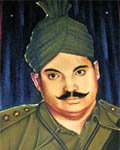

DSP
Karam Singh
Home
ministry ordered Deputy Superintendent of Police or DSP Karam Singh
to take a team of 40 policemen and establish police outposts In
Kongka pass area with the first post to be established at Hot
Springs. DSP Karam Singh reached Hot Springs on 20h October 2012 and
then started surveying the area for further action. He was not aware
at all about the fully equipped PLA soldiers entrenched in that area.
DSP Karam Singh's troupe was quickly surrounded by the PLA soldiers
and was asked by them to leave.


Hot
Springs area; geographical situation
In an
extremely defiant gesture, DSP Karam Singh bent down, picked up an
handful of dust and touched it to his heart, indicating that the land
belongs to India. When Indian media came to know about this, DSP
Karam Singh and his team became national heroes overnight. But that
was too late. At Kongka pass DSP Karm Singh's team faced complete
massacre. They just could not defend themselves with their WW II .303
bolt rifles against Chinese soldiers equipped with semi automatic
rifles, machine guns and mortars. Within few hour, 10 policemen from
DSP Karam Singh's team were lost. Realizing that they can not defend
themselves, Indians finally surrendered. They were released by the
Chinese after 12 days with much torture and only handful unarmed
Indian police were allowed to take back the bodies. A police
constable ' Sonam Wangyal' describes this scene in these words.
“Even
while we were collecting the bodies, Chinese women in uniform were
clicking photographs. The Chinese soldiers were wrapped in snow-white
warm clothing and snow-boots while were in our woolen Angora shirts
and jerseys, bearing the brunt of the biting cold at that prohibitive
height of 16,300 feet.”
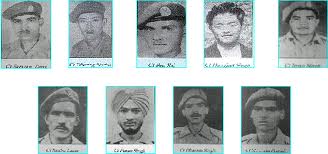

The CRPF policemen, who died in Chinese ambush
The
shocking news about “Kongka Pass incident” reverberated
throughout India like wild fire. Nehru's China policy was criticized
heavily and demands were made to remove Krishna Menon from the post
of defense minister.
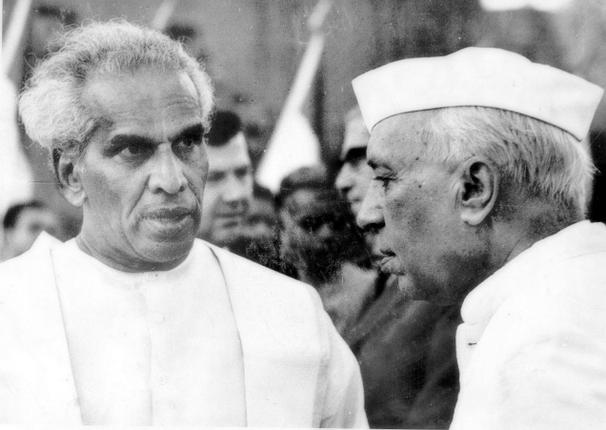
V.K. Krishna Menon and Jawaharlal Nehru
In
Delhi, the home ministry was condemned for their foolish adventure by
the chief of army staff and finally a decision was taken that all
CRPF personnel from Ladakh would be replaced by army units. Meanwhile
Prime Minister Nehru faced heavy fire for his China policies. Finally
buckling under tremendous public pressure, he announced the so called
“ Forward policy” under which, Army would establish forward posts
in the areas where Chinese had established control during last few
years. Those who knew the current situation, realized the
ineffectiveness of this announcement. However, general public in
India thought that China would now be paid in its own coins.
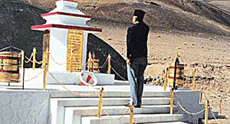

Hot
springs memorial for policemen
Sensing
India's mood, Chinese suddenly announced that if Indian army ventures
out in Ladakh, their army units would move south of the border into
Arunachal Pradesh in the north east, where the border was well
demarcated and is known as McMahon line.
The
stage was now set for a major clash between two Asian neighbours. It
actually happened 3 years later or in 1962.
By October 1959, Chinese defenses in east Ladakh were so much fortified and strengthened that Indo-Tibet Border Police or ITBP personnel found it almost impossible to deal with the intrusions made by Chinese inside Indian border and their extremely arrogant behaviour towards the Indians. The decision taken in Delhi to withdraw ITBF units from border and bring in regular army units in their place was a welcome measure and brought some stability along the border.

By October 1959, Chinese defenses in east Ladakh were so much fortified and strengthened that Indo-Tibet Border Police or ITBP personnel found it almost impossible to deal with the intrusions made by Chinese inside Indian border and their extremely arrogant behaviour towards the Indians. The decision taken in Delhi to withdraw ITBF units from border and bring in regular army units in their place was a welcome measure and brought some stability along the border.
Militarily
speaking, the situation in east Ladakh was grave and serious. The
entire region of Aksaichin belonged to India only on paper and in the
maps. Chinese soldiers had fortified and blocked all approaches to
Aksaichin from Ladakh.
Chinese soldiers had established well fortified defenses along the
nortrhern approach to Aksaichin near Chipchap river as well as near
Kongka pass in the south. In addition, entire region east of Chushul
town including Yu La, Spangur gap and Pangur lake were controlled by
Chinese. Beacuse of this, the airstrip at Chushul was in continuous
danger of being taken over. The supply route to Chushul town through
Tsaka pass was in range of Chinese field guns and Chinese were in
position to cut off this route at any given time. In short, all
possible routes to Aksaichin were effectively cut off by the Chinese
and this region was lost for India. This was primarily because the
1952 report by Capt. Nath and Capt. Suri was kept under wraps and no
timely action was ever taken.
After
studying the ground situation, Army's western command, made a demand
of at least 1 division strength of troupes (15000 fighting men) to
Army head quarters in Delhi. However western command was given only 1
Brigade strength (3000 men) only. Most of the new arrivals were
earlier stationed in the south of Himalayas and were not properly
acclimatized for the great heights at which they were now positioned.
These men were not provided with proper warm clothing and other
accessories for effectively operating in Ladakh under severely cold
conditions. They were equipped with World War II, 0.303 single bolt
action rifles which were no match for the semi automatic weapons that
Chinese soldiers had.
Meanwhile
slowly, as Indian people started becoming aware of the Chinese
actions and intentions, a tremendous public pressure grew on
Government of India to take some concrete steps to effectively
counter the Chinese advances in Ladakh. Prime minister Nehru, who
had kept reports of Chinese activities under wraps so far, finally
buckled under pressure and announced, what he called as forward
policy, under which Indian outposts were to be established east or
north of present positions to effectively counter Chinese advances.

Outposts set up under forward Policy of Nehru
Irrespective
of what the Government or the Prime minister had said in the
Parliament, the ground realities in Ladakh were militarily so
depressing that only thing that was possible was to set up few
advance posts in areas where there were no Chinese posts present.
Within next year Indian Army established 17 such posts from Daulat
Beg Oldi area near Karakoram pass in north to Demchok post on Indus
in south. Strategically most of these posts were located in such
disadvantageous locations that neither it was possible to have
reliable supply routes to these posts nor was it possible to provide
them with any artillery or tank cover in case of any major attack
from the enemy. These posts were essentially set up as advanced
observation posts and were in no way capable of defending themselves
under serious enemy action. It is therefore no wonder that most of
these posts fell in 1962 war within few hours or days.
To
defend the Chushul town from any attack, advanced posts were
established at Yu La pass, Sirijap La pass on the north shore of
Pangong Lake , hill features like Gurung Hill, Magar hill and an
important pass on east shore of Pangur lake known as Rezang La, which
effectively blocked any Chinese advance towards Tsaka La pass supply
route to Chushul. Establishment of these posts immediately improved
the stability in the border area and brought about marked reduction
in Chinese encroachments and their arrogant behaviour. Many critics
say that the Forward policy was one of the major attribute for the
1962 border war. This is certainly true to some extent. But it must
be appreciated that if these forward posts had not been in position,
during next few years, the Chinese would have encroached much deeper
inside and would have grabbed much more Indian territory. Secondly,
in spite of mainly being observation posts, most of them gave such a
stinging blow to PLA when the war broke out, before surrendering to
the Chinese, that by end of the 1962 war, the ground realities
remained more or less same as in 1959.
In
early 1962, as it became apparent that war was imminent, the garrison
at Chushul town, received much wanted help from Leh. More troupes
joined them. In the month of May 2012, an Indian forward post manned
by a Junior Commissioned officer and 14 men were confronted by about
200 Chinese soldiers at about 120 meters from the post. As per orders
received, this JCO controlled himself and kept quiet. After some time
Chinese left. In an another incidence on 10th
July 2012, an outpost, being manned by Gurkha regiment, was
confronted by 350 Chinese soldiers, who came up to 200 meters from
the post and tried to convince the Gurkha soldiers, by speaking to
them on loudspeakers, that they should not fight for India. The
outpost commander Subhedar Jung Bahaddur, started cursing the Chinese
in his native Gurkhyali language. After this Chinese left.
Occurrence of such incidences on regular basis, made each and every
Indian soldier in Ladakh acutely aware that war was now Imminent.
Indian outposts in this region were attacked first.
On the
night of 21/22 October 1962, Chinese made their first major attacks.
In northeast Ladakh, a small river called Galwan joins the Upper
Shoyok river near a summer camp known as Saser Brangsa. Indian
outpost near about upper Galwan river, received the first attack of
Chinese soldiers. This post fell after Chinese artillery bombarded
this post for entire day and when the commander of the post, Subhedar
Jung Bahaddur Thapa was killed. The Chandani outpost north of
airstrip at Daulat Beg oldi manned by just 28 soldiers and commanded
by Subhedar Sonam Stobadan was attacked by 500 Chinese soldiers. All
soldiers manning this post except one soldier, who was wounded,
perished in the attack. Subhedar Soman was later awarded a gallentry
award known as “Maha Veer Chakra” posthumously. Another
observation post 1t 17000 feet height and known as Parmodak was
manned by only 5 Indian soldiers. They were all killed on this very
day. Bishan outpost at 18645 feet was bombarded by Chinese for 45
minutes and was subjected to two infantry attacks on the same day.
Both the attacks were repulsed successfully. After this the outpost
was vacated on orders, which clearly stated that the troupes must
vacate the posts if attacked. Chinese had succeeded in capturing
almost all Indian outposts, north of Galwan river on the very first
day of war.
Situation
on that day, even in southeast Ladakh, was not much different.
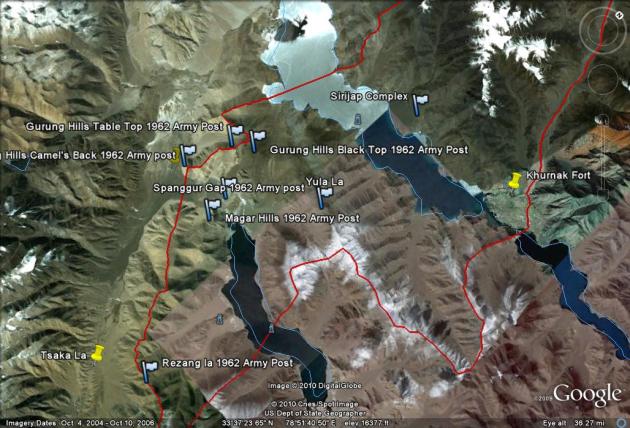
The Chinese, now shifted their attention to Rezang La pass outpost. This outpost was a major Indian defense position located in the mountain on the southwest shoreline of Pangur lake. As long as Rezang la was held by Indians, no attempt was possible by China to capture the main supply route to Chushul through Tsaka la pass. Indian soldiers of the 1st company of 13th Kumaon Rifles led by Major Shaitan Singh were well dug in here with a clear view of all the area upto Pangur lake. It was well neigh impossible for Chinese to move towards Chushul as long as Rezang La was in Indian hands. The only problem for the Indians at Rezang La position was that a hill feature was coming in the way of getting any covering fire from the Indian artillery for their support. It was clear that major Shaitan Singh's men would have to fight it out on their own. Their orders were clear. Fight to the last man and the last bullet. Such was the importance of Rezang La.

Major Shaitan Singh (PVC) Posthumous Memorial for battle of Chushul
An excellent movie named Haqeeqat, was produced on the epic battle of Rezang La in 1964. It may be worthwhile for anyone interested in this history to watch this movie.
A Shot from the 1964 film Haqeegat on epic battle of Rezang La
On
21st
October itself, the Chinese also attacked Indian forward posts near
Sirijap pass on the northeast shore of the Pangong lake. During
previous years, China had moved its armour from Rudok in Tibet to
Khurnak fort, which was well fortified. They had also built roads
over the years, up to Sirijap pass area along the northeast shoreline
of Pangong lake. The attack started with a bombardment of posts in
Sirijap La area. After continuous bombardment of about 2 or 3 hours,
Chinese armour moved in along the shoreline towards Sirijap area.
Unfortunately, no anti tank weapons were made available to the Indian
outposts in this area. The Sirijap posts were commanded by Major Dhan
Singh Thapa., who ordered his men to attack the Chinese soldiers
with Khukaris ( A Nepali dagger like weapon) and bayonets. A fierce
hand to hand battle raged along the shoreline, with Gurkhas killing
more than 100 Chinese soldiers before perishing themselves. Major
Thapa somehow survived the fierce hand to hand battle. He was awarded
later India's topmost Gallentry award “Param Veer Chakra.”
After fall of Sirijap posts, it was impossible to provide support to
Yu La outpost. This outpost was located in the mountains between the
southwest shore line of Pangong lake and the northeast shore line
of Pangur lake and was supported essentially from Sirijap posts by
boats ferrying men and materials across Pangong lake. Because of
this reason, it was decided to call back all the soldiers manning the
Yu La outpost. With this withdrawal , all the outposts to northeast
of Chushul were now in Chinese hands. There was a complete lull along
the border for next few days, may be because of stiff resistance
shown by Indian defenders or unexpected heavy losses on Chinese side,
but we may never know.

On
27th October, Chinese attacked posts in Chang La and Jara La near
village of Demchok located at southern end of Ladakh-Tibet border.
The commander of Chang La post, Jamadar Ishe Thundup saved lives of
all his men but was killed in the fighting. He was later awarded a
gallantry award “Veer Chakra” posthumously. The soldiers
defending Jara La, managed to escape in the cover of darkness. With
fall of these posts, Chinese had captured villages of Demchok and
Demchele on Indus river and had effectively blocked any possibility
of a counter attack by an Indian column in Tibet. Now the garrison at
Chushul and forward posts around it remained between China and
capital of Ladakh; Leh.
Considering
the seriousness of the situation, commander of Indian forces in
Ladakh, Brigadier Raina decided to airlift 25 pound Howitzers and
AMX-13 light tanks to augment defense of Chushul. Within next 2/3
days, the guns and tanks reached Chushul. For Indian air force, this
was a big challenge as Chushul only had a make shift airstrip with
surface made from perforated steel planks or PSP. Air force's 44
squadron transported six numbers of AMX-13 light tanks in their AN 12
transport air craft. The tanks were carried in two parts, the hull
and gun in one flight and the chassis in second. With arrival of
these, one biggest deficiency in defense of Chushul was no doubt
overcome. In addition some additional troupes also joined the
garrison in Chushul. The army considered the possibility that the
main supply route to Chushul through Tsaka La pass was likely to be
overrun by Chinese and accordingly kept an alternate route to Chushul
ready for use.
AN 12 transport aircraft that brought in AMX-13 tanks at Chushul in 1962
Chinese
began their assault on Chushul on 18th
November 1962. Chinese artillery bagan very heavy bombardment of
Indian outposts in Spangur gap, Rezang La pass, supply route through
Tsaka La pass. Gurung Hill, Magar Hill and the airstrip itself. This
bombardment proved quite ineffective. Chinese guns then advanced
ahead of Chinese posts in Spangur gap and started bombardment. This
brought them in sight of the field guns on Magar hill. When Indian
guns opened up, few Chinese guns were destroyed in Spangur gap and
the bombardment was silenced. After this Chinese artillery retreated
and never again tried to bombard the Chushul aitstrip. This attack
perhaps made Chinese realize that they must destroy all the Indian
outposts around Chushul before making any attempt for Chushul.
Indian
soldiers were waiting at Rezang La post when human waves of thousands
of Chinese soldiers attacked from both sides. Major Shaitan Singh and
his men fought this battle to the last man and the last bullet killing
more than 1000 Chinese soldiers.
The Chinese, now shifted their attention to Rezang La pass outpost. This outpost was a major Indian defense position located in the mountain on the southwest shoreline of Pangur lake. As long as Rezang la was held by Indians, no attempt was possible by China to capture the main supply route to Chushul through Tsaka la pass. Indian soldiers of the 1st company of 13th Kumaon Rifles led by Major Shaitan Singh were well dug in here with a clear view of all the area upto Pangur lake. It was well neigh impossible for Chinese to move towards Chushul as long as Rezang La was in Indian hands. The only problem for the Indians at Rezang La position was that a hill feature was coming in the way of getting any covering fire from the Indian artillery for their support. It was clear that major Shaitan Singh's men would have to fight it out on their own. Their orders were clear. Fight to the last man and the last bullet. Such was the importance of Rezang La.
After
heavy bombardment of the post, Chinese attacked Rezang La from two
sides, Major Shaitan Singh and his men were ready for them. The
battle that developed later at Rezang La, can truly be described as
the mother of all battles. Chinese had sent thousands of their men
just to attack one outpost. The Indians experienced the Chinese
technique of human wave assault here for the first time. As Indian
machine guns virtually mowed the waves of Chinese soldiers, more and
more waves of soldiers kept coming. The fight that Major Shaitan
Singh and his men gave at Rezang la, showing extreme valour and
bravery, has very few parallels in the history of battles anywhere in
the world. When this battle was over, with last Indian soldier
fallen and last bullet expanded, the slopes to Rezang la were stacked
with dead Chinese soldiers. Out of Major Shaitan Singh's 118
soldiers, 105 had died at their battle stations, 5 were picked up by
Chinese in wounded conditions as they overran the outpost and 4
managed to escape to safety of Garrison at Chushul. Major Shaitan
Singh was awarded highest gallantry award “Param Veer Chakra”
and 5 others were awarded “ Veer Chakra” all posthumously. The
battle was so fierce that more than 1000 Chinese soldiers had
perished in this attack.
After
the fall of Rezang La, in a most surprising move, Chinese attackers
simply went back and never occupied the post again. In the summer of
1963, a shepherd moving with his herd, accidentally reached Rezang
La. He had a shock of his life, when he saw dead Indian soldiers
still at battle stations with their rifles and guns in their hands. A
dead medico was found with an injection syringe in his hand. All
bodies were then brought down with help of International Red Cross to
Indian side and last rites were performed. A memorial has been now
erected for the brave soldiers of Rezang La.

Major Shaitan Singh (PVC) Posthumous Memorial for battle of Chushul
An excellent movie named Haqeeqat, was produced on the epic battle of Rezang La in 1964. It may be worthwhile for anyone interested in this history to watch this movie.
Meanhile,
Chinese had launched an attack on Indian positions at Black top on
Gurung hill with the same human wave technique. Fortunately, the
soldiers here, could get the help of the Howitzers and AMX tanks of
the Chushul garrison. The posts here repulsed two such human wave
attacks before falling. Chinese had now cleared all obstacles in the
way towards Chushul. The Indian losses in the battle of Chushul were
140 men as against Chinese, who had lost more than 1000 men. Chushul
airstrip was still safe and usable because of the effective use of
the Tanks and the field guns. Realizing that the next battle would be
for Chushul, it was decided to call back all the soldiers still
positioned in the forward posts to regroup and take defensive
positions for Chushul and wait.
However
in a biggest anti-climax, within 3 days of the heroic battle of
Rezang La, China suddenly declared an unilateral cease fire and
withdrew all soldiers 20 Km behind the positions held by them on
November 21st.
The attack on Chushsul never came. It was clear that the greatest battle
of Rezang La had broken the Chinese momentum. Rezang La was the turning
point of 1962 war in Ladakh.
Many
theories have been propounded about Chinese unilateral withdrawal.
Out of these couple of reasons appear logical to me. In the first
place, Chinese had perhaps never expected with their earlier
experience with CRPF, to loose so many men in the war. Secondly, they
were fighting a limited border war to safeguard the safety of
Tibet-Xinjiang road, which they considered as the most crucial and
vital artery for moving men and materials between Tibet and Xinjiang.
Since their aim was fulfilled and Indians were pushed back to 1959
positions, they saw no point in continuing this war. Whatever may be
true reason for this Chinese action, The Battle of Rezang La must
have been one of the key factors at arriving this decision.
There
is no doubt in my mind that Indian soldiers in Ladakh did their duty
exceedingly well. They faced a numerically much superior enemy with
vastly inferior weapons and inflicted heavy losses. Even if India had
lost the 1962 war, there have been substantial gains made by India as
a nation. In the first place, India gave up all dreamy notions like
Non Alignment and Panchshil. Secondly the Government of India
realized the great blunder that it had perpetuated for last 14 years
in neglecting the Indian armed forces. In the later years, armed
forces were again provided with requisite strength, funds and the
forces re gained their importance.
I
always think that the fight that Major Shaitan Singh and his men gave
at Rezang La, would always be remembered by every Indian not only as
an epic battle, but as an ultimate proof of what could be achieved by
few resolute men, acting against all odds.
----------







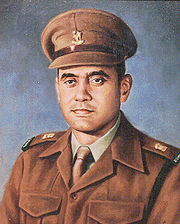
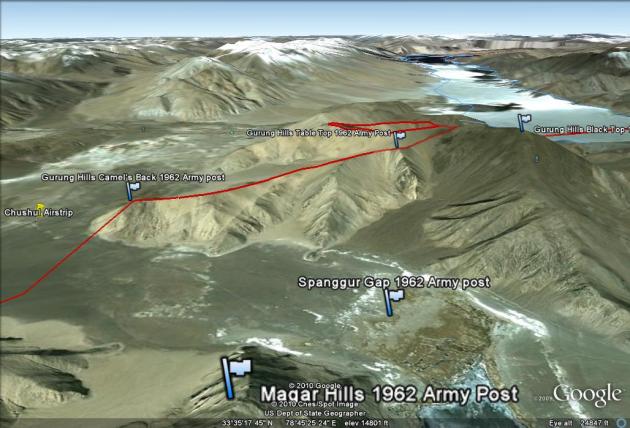
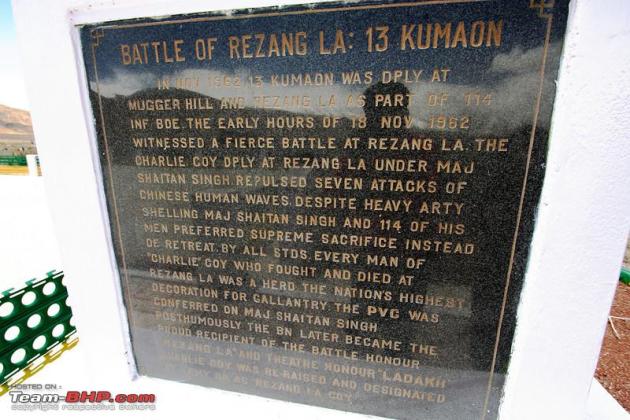
No comments:
Post a Comment